“At this time there is nothing in the world any quicker, any better handling, any more advanced technically, or any more fun to drive. It is, to me, the perfect race car.” ~ Mark Donohue, 1973, discussing the beauty of the Porsche 917/30 Can-Am Spyder.
By 1969, with the 917 program still in its early stages, Porsche had already built a special variant of its 12-cylinder race car for the popular North American Can-Am series.
Although the original 917 had been designed to meet the demands of 24-hour endurance events, the platform showed tremendous potential for Can-Am’s 200-mile sprint events and Porsche, eager to return to prominence in US road racing, began to develop an even lighter and more powerful race car.
The first Can-Am 917 was the PA, which debuted late in the 1969 season. Essentially a standard chassis with open bodywork, wider wheels, an extra fuel tank and a slightly revised frame, the largely untested 917PA showed great promise, finishing 4th in the final 1969 Can-Am point standings.
Late in 1970, Porsche decided to move forward with a purpose-built Can-Am 917. As North America, and the US in particular, had long been Porsche’s most important market, there was to be no compromising in the design of the new car – it had to be a winner.
Hans Mezger’s team went to work on a chassis that combined the best aspects of the 917K and the 908/03 with the added bonus of a twin-turbocharged five-liter powerplant. The result was the 917/10.
In 1972, Porsche began an alliance with Roger Penske Racing, a small yet influential team based in Newtown Square, Pennsylvania. With L&M Cigarettes as the primary sponsor, Penske Racing’s 917/10 dominated the 1972 Can-Am season, winning six of the nine races.
Although the 917/10s were spectacular cars, Porsche had something even better up its sleeve for the following year: the 917/30.
The 917/30 of 1973 was, for all intents and purposes, an all-new car when compared to its predecessor. At the heart of the car was an enlarged 5.4-liter flat 12-cylinder engine – turbocharged, of course. Along with the larger capacity engine, the 917/30 featured dramatic, low-drag bodywork.
To address issues discovered during the 1972 season, Porsche enlisted Charles Deutsch’s SERA of Paris to advise on a suitable body shape and to hone the design in the Eiffel wind tunnel. To cope with the increased performance, Porsche extended the wheelbase, upped the fuel capacity, provided strengthened lower wishbones and designed special extractor turbines to aid in brake cooling.
The result of this extensive development was a sports racing car that weighed just 1,765 lbs. at the curb and produced over 1,000 hp – a monumental figure for a sports racing car. With the boost turned up, over 1,500 bhp was achievable.
The exceptional power-to-weight ratio made for staggering performance figures: 0–60 in 2.1 seconds; 0–100 in 3.9 seconds; 0–200 in 13.4 seconds. Given enough open road, the 917/30 was capable of more than 240 mph.
In Penske tradition, the team’s 917/30 was immaculately prepared, with exceptional attention to detail throughout. Steel components were cadmium plated, removable aluminum tubes were anodized blue and frame tubes were painted gray. Finished in its dark blue Sunoco livery with vibrant yellow and red striping, the new 917/30 was truly a sight to behold.
After a shaky start to the 1973 season, Donohue won six races in a row, annihilating the competition and capturing the Can-Am Championship. The Porsche was so effective that the competition, comprised of the era’s most advanced racing cars, was easily outdistanced on the faster circuits. Following the brilliant 1973 season, Donohue announced his retirement from racing and Porsche ended its Can-Am program.
In 1975, Donohue made one final appearance in the 917/30 – an event that further developed the legendary reputation of Porsche’s ultimate road racing car.
The previous year, A.J. Foyt set a world closed-course speed record with his USAC Coyote – running 217.854 mph on the 2.66-mile banked oval at Talladega.
Believing that the 917/30 could eclipse that result, Donohue obtained sponsorship from CAM2 motor oil and commissioned Porsche to prepare two special engines for the high-speed run. On August 9, 1975, Donohue drove the CAM2 Porsche to a new official record for the fastest closed-course lap at 221.120 mph.
The record stood for almost two decades.
The 917/30 presented here, chassis 004, is one of just six chassis constructed by Porsche.
Following Porsche’s exit from the Can-Am series, the racing department at Weissach was left with a marvellous, technically advanced racing car made obsolete after just a single racing season. With little or no use for the remaining 917/30s, the cars were eventually sold to privateers with close factory connections.
Sold new to Australian Porsche importer Alan Hamilton, 004 was built to the same basic specifications as the legendary Penske team cars but finished with plain white bodywork. Hamilton, who greatly admired the incredible sophistication and performance of the 917/30 chassis, displayed the Can-Am Spyder in his Melbourne showroom alongside several significant racing Porsches from his private collection.
While never seriously campaigned, during its time in Australia, the 917/30 took part in many local events and in its later days, was a major attraction at automotive events such as the historic race preceding the Adelaide Grand Prix.
In the 1980s, Porsche began purchasing independent distributorships including Alan Hamilton’s Porsche Australia. In 1991, as part of the purchase agreement, Porsche acquired a number of Hamilton’s racing cars; not surprisingly, 917/30-004 was among the group of historic racing cars to return to Germany.
Porsche 917/30 Can-Am Spyder – Car Profile Continued
Porsche 917/30 Can-Am Spyder Profile – Page Two
After arriving at the factory, 917/30-004 was refinished in the iconic blue, yellow and red Sunoco livery made famous by Roger Penske’s all-conquering 1973 Can-Am cars. In July 1992, Porsche AG completed an FIA Historic Vehicle Identity Form for 917/30-004 in anticipation of entering the car in historic events. The following month, Porsche AG entered the 917/30 in the AvD Oldtimer Grand Prix at Nürburgring, where former Porsche works driver Günter Steckkoeing was entrusted with the powerful Can-Am Spyder.
In January 1994, noted Porsche collector David Morse of Campbell, California, made an agreement with Porsche AG to purchase 917/30-004. Before the Can-Am Spyder was shipped to the US, Porsche rebuilt the engine using the last remaining 5.4-liter case, which had been sourced from Vasek Polak’s extensive holdings of original racing parts.
After being shipped to Germany and rebuilt, the engine was tested on a dyno. With a conservative boost of 1.2 bar, the engine recorded 983 bhp at 8,400 rpm. According to Porsche, the engine was capable of producing an estimated 1,200 bhp at just 1.4 bar.
By the end of that year, 917/30-004 had arrived in California, where it was completely disassembled and meticulously restored by Morspeed. Given the rarity and significance of the car, a tremendous effort was made to ensure an accurate, period-correct presentation throughout, while still producing a track-ready machine.
Once disassembled, the bare frame and suspension components were crack checked and repaired as necessary, using original materials wherever possible. For a consistent, high-quality finish, fiberglass panels were fashioned using the originals to form the mold. Throughout the process, period photos were used to guide the restoration and the correct color codes were obtained from the Penske team so that the Sunoco livery could be faithfully prepared.
The freshly restored 917/30 made its debut at the 1998 Monterey Historics, where the 50th anniversary of Porsche was celebrated. As would be expected, 917/30-004 took part in the festivities, racing in the Can-Am category. Driven by Porsche’s own Olaf Lang, the 917/30 won the race, defeating a field of McLarens and Shadows. It was like 1973 all over again.
In 2001, Matthew Drendel purchased 917/30-004. For the young collector, the acquisition of the most famous turbocharged Porsche of all time was seen as a major coup. To celebrate, 917/30-004 – and its proud new owner – participated in the first Rennsport Reunion at Lime Rock Park. There, 004 was joined by Porche’s 917/30-002, the car that served as Penske’s back-up car for the 1973 Can-Am season, as well as Roger Penske himself. After Porsche’s car experienced some mechanical difficulty, Mr. Penske enjoyed some time behind the wheel of 917/30-004, taking the car out for several hot laps.
In 2004, 917/30-004 won the 917 class at the Rennsport Reunion II Concours and the following year it was exhibited at the Porsche Club of America 50th Anniversary Porsche Parade in Hershey, Pennsylvania. In 2006, the Porsche was displayed at the 100 Motor Cars of Radnor Hunt, as well as the Amelia Island Concours d’Elegance where it was displayed in the “Cars of the Can-Am Series” class. Given its prominence in the Porsche community, it is no surprise that the Drendel family’s 917/30 was invited to take part in the famed “Family Tree” commercial, which featured some of the most important examples of the marque.
Beyond its success on the track and the concours lawn, 917/30-004 was featured in Pete Lyons’ book Can-Am Cars in Detail. In the 917/30 section, Mr. Drendel gives a visceral account of the dynamic qualities of his Can-Am Spyder:
“It’s like a Learjet on takeoff. It feels like it’s never running out of power and it feels like that in every gear. It feels like you’re being pushed by the hand of God. One time I floored it in second gear and the front wheels came off the ground! I got it out on a 15,000-foot runway and went to 8,000 rpm in high gear. I figure that was over 200 miles an hour, way over. My hands are starting to sweat just thinking of it.”
Despite its otherworldly performance, 917/30-004 would be a welcome entrant into a wide variety of leading historic events. In recent years, 917/10s and 917/30s have been seen participating in a number of major venues, from Rennsport Reunion to the Goodwood Festival of Speed.
Although the 917/30 Can-Am Spyder commands a great deal of respect from its driver, it is ultimately a very highly evolved 917, one of the most respected and revered of historic racing machines. In the hands of its former owners and current custodian, 917/30-004 has been enjoyed as originally intended – on the track. For those interested in campaigning the car in historic events, it should be noted that the sale includes a full set of body molds, an important consideration when operating a car of such immense performance.
A strong testament to the historical significance and popularity of these spectacular racing machines, all six 917/30s are accounted for today. Chassis 001 – known as the variable- wheelbase car – and 002 are part of the Porsche Museum Collection in Stuttgart; 003 is currently owned by a private collector in France. Chassis 005 and 006 also remain in private hands.
Although 917/30-004 never had the opportunity to compete in the Can-Am series, its sheltered life in the hands of appreciative caretakers has ensured that this car remains in exceptional condition. Given its distinguished ownership chain, award-winning restoration, authentic specification and inherent rarity, 917/30-004 is an automobile of immense appeal and presence.
Almost four decades have passed since the introduction of the 917/30, yet it remains one of the most iconic racing cars of all time, a monumental work of automotive engineering and the ultimate test of a racing driver. It is undoubtedly one of Porsche’s most magnificent creations.
This particular 1973 Porsche 917/30 Can-Am Spyder, chassis number 917/30-004, sold for $4,400,000 at the 2012 Gooding and Company Amelia Island sale, held March 9th in Amelia Island, Florida.
Auction Editor Rick Carey reported on 917/30-004:

[Source: Gooding & Company; photo credit: Pawel Litwinski courtesy of Gooding]






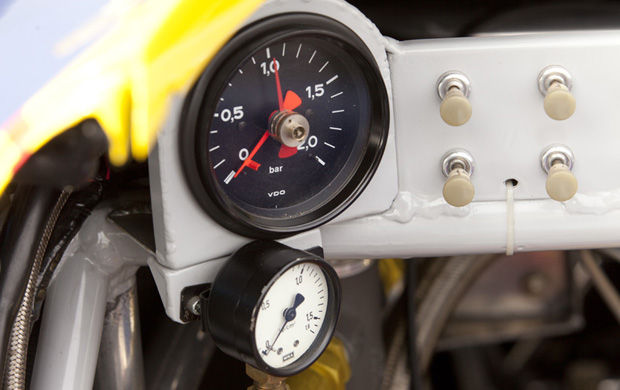



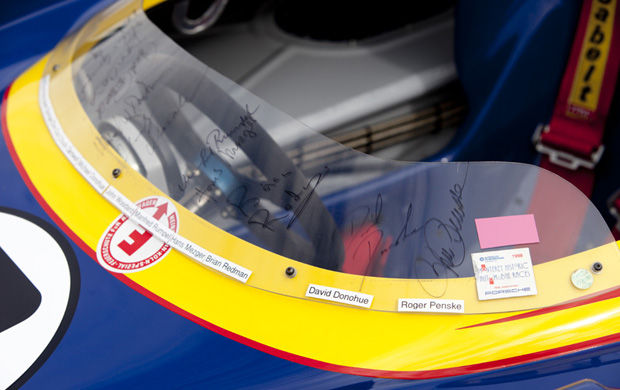

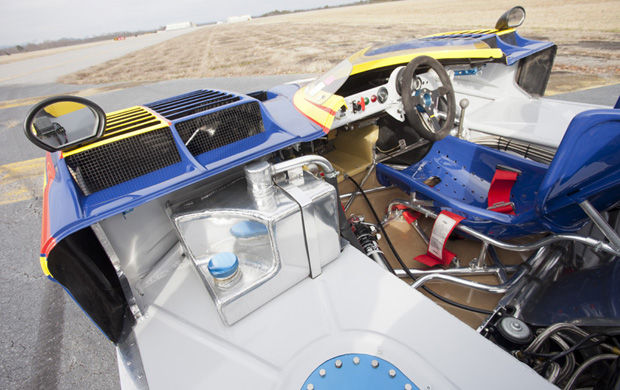
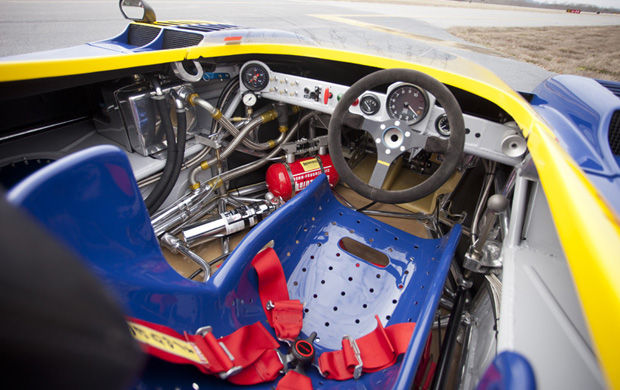













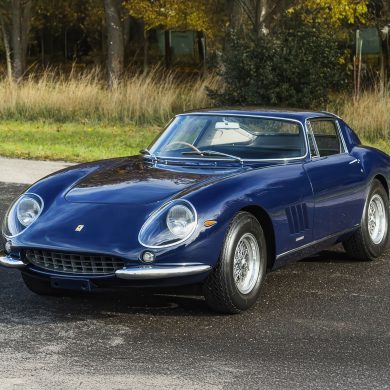


amazing car
The Sunoco Penske Number 6 car represents a major milestone in my life. I rode as a passenger in the Penske-Donohue car. Not one of the cars painted to look like it, but the very car that Donohue drove. At the time, it was owned and driven frequently on the track by the late Otis Chandler, who also owned the Gulf 917K driven by Steve McQueen in the movie “Le Mans.” Otis love the 917-30 and his playground was Riverside, which allowed full throttle acceleration from Turn 8 all the way to Turn 9. It was a good track for the car. Acceleration out of the pits in that car was beyond description. The driver for my few laps at speed around Riverside was Otis’ friend and track partner John Thomas, who co-drive with Otis in IMSA events in a 935, that was also part of Otis’ collection.
In vintage events, Thomas drove the 917K and Otis drove the 917-30, which absolutely ruled. There was nothing — nothing — that could give it a run. This was back in the early 1980s. What is most astounding, in reflection, about those priceless four laps, is the memory of continuum of controlled, seamless performance. Lateral adhesion was phenomenal, as was acceleration and braking. But, despite the absolutely blinding speed of the car, it was not a violent ride. Unlike the 917K, which John Thomas described as a car that liked to bite you, by trying to slam into the wall at 190 MPH, the 917-30 give a sense of smooth control.
The acceleration was so ferocious and at the same time so smooth that it defied the senses. There was very little noise. Only the momentary drop of G-force between upshifts — which was in fact a violent transition – gave away the ferocious multiplication of velocity that was going on. But every transition through Riverside’s thrilling and wonderful curves was down with grace and balance — at a speed that was simply beyond believability.
Unlike many race cars of the time, which gave away the elements of stress and strain, and were working hard to do the job, making noises, clanking and juddering, the 917-30 was poised.
I later got passenger laps in Otis’ 935 at Willow Springs and rode with John Fitzpatrick in a 935 K3 at Daytona, but nothing compared to the sheer thrill and majesty of my laps in the Sunoco Number 6 car.
It’s interesting to read how many 917-30s there are now. Only three had been built at the time Otis owned “6.
David Barry
New Hope, Pa.
Hi David – Wonderful comment. Talk about the chance of a lifetime…and then some.
actually was at track elkhart in 1973 and was blown away by this car. i got to go right up to roger penske and mark donahue and took pictures. i will have these cool memories for the rest of my life, also years later at same track got to meet paul newman when he drove for nissan .
This was one of the great racing cars of all time and this is a great series to cover some of these iconic race cars – far better than Motor Sport!
I had the pleasure of working with John Thomas in the late 1970’s at Bozzani Porsche and attended a POC event at Riverside with him, Otis Chandler and the 917K and 917/30. john was a great guy and placed my young son in the 917/30 driver seat for a moment he remembers to this day. What an incredible era in racing.
such a beautiful car….i grew up watching these amazing cars and have been in love with can am cars my entire life so much so that i own this car and many other can am style cars as slot cars. the sunoco porsche/ audi is my desktop on my pc
I raced Formula Fords and Formula Atlantic on the west coast and worked for Red Burmiester’s CanAM team when they made the west coast swing. I saw the 917/30k for the 1st time at Laguna Seca. It was no contest against the competition. Coming out of turn 9 with each upshift there was a loud pop the car made when upshifting which would immediately draw your attention. Mark Donahue was always my favorite driver so i went over to where the Penske paddock area was and introduced myself to Mark who in turn introduced me to Roger. We discussed the popping which they were trying to minimize.
Two weeks later we were in Riverside using the long course. Roger had told me they had a special tail section (langtaile) which they had saved to use on the long straight at the track. Well the other drivers were complaining about their cars becoming front end lite at the bump where turn 7/7a joined onto the backstraight. SCCA made the decision for safety reasons to abandon using the long course and went to the short track which made the backstraight shorter thus Penske never took out the faster bodywork. and Mark confirmed to me that it would hit 240MPH down that stretch.
Those were some great days.